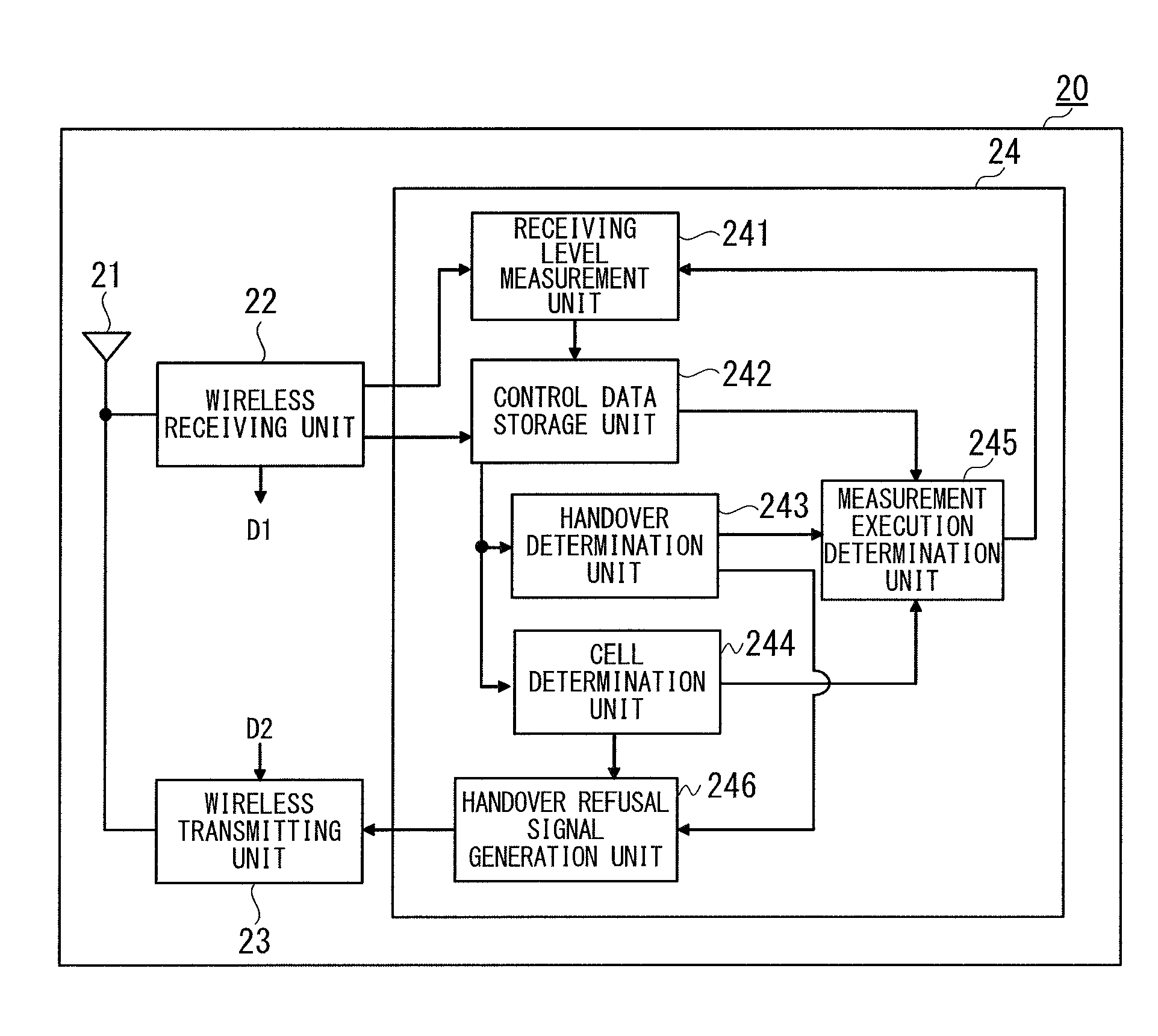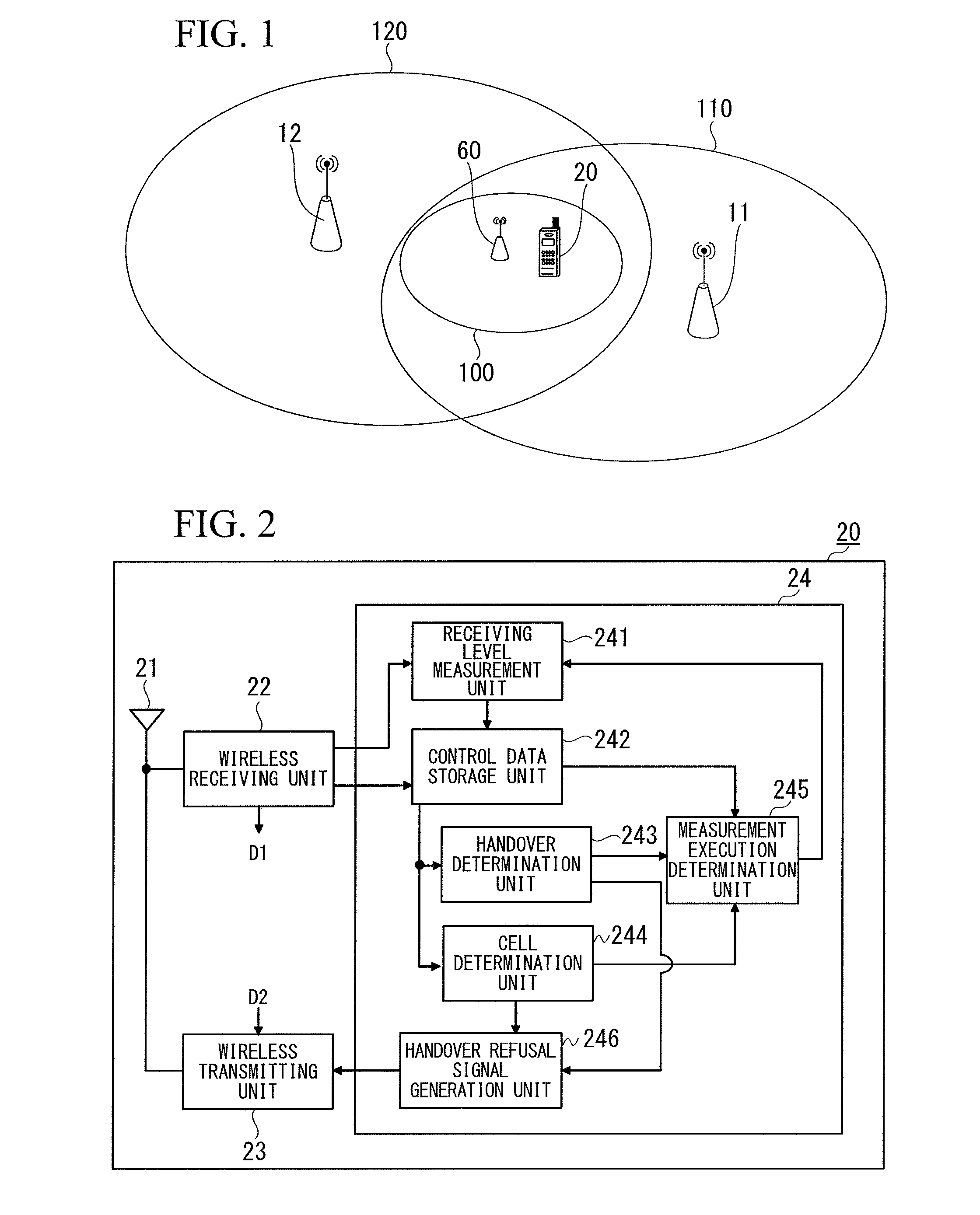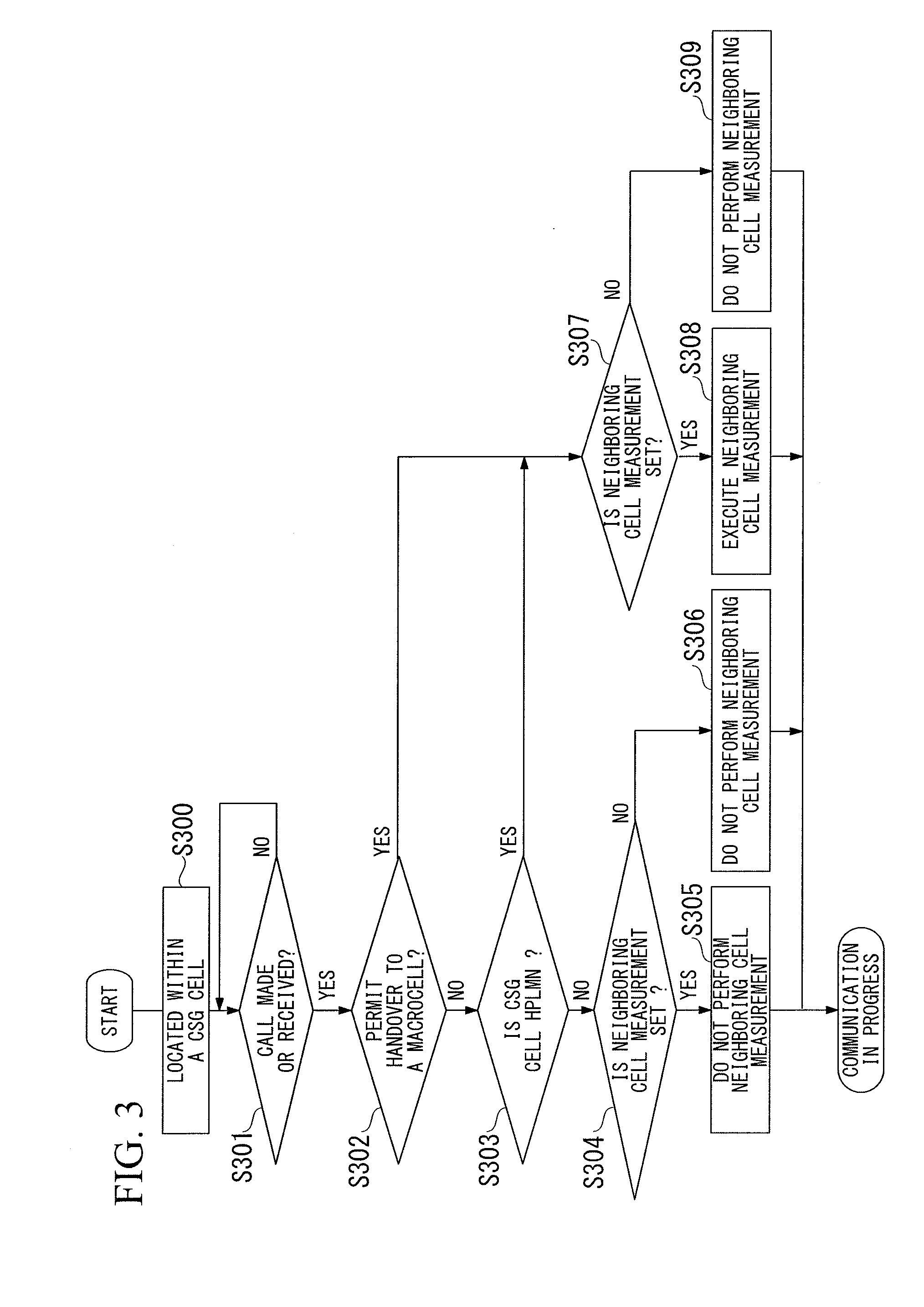Handover control method, mobile station device, and base station device
- Summary
- Abstract
- Description
- Claims
- Application Information
AI Technical Summary
Benefits of technology
Problems solved by technology
Method used
Image
Examples
first embodiment
[0042]In the first embodiment, the object is not to execute handover to a neighboring cell by not measuring the neighboring cell when the mobile station device is within the service area of a VPLMN CSG cell.
[0043]FIG. 3 is a flowchart describing the handover control method of the first embodiment. Within the constitution of the mobile communication system of FIG. 1, an example of the mobile station device 20 of FIG. 2 executing the flowchart of FIG. 3 will be described.
[0044]The mobile station device 20, by manual CSG selection by a user, is within the service area of the VPLMN CSG cell 100 (step S300). If the mobile station device 20 starts communicating by making a call or receiving a call (Yes at step S301), the handover determination unit 243 of the mobile station device 20 determines whether or not handover to a neighboring macrocell is permitted by the determination means already described (step S302). In this case, handover to the VPLMN macrocell 120 is not permitted. If the ...
second embodiment
[0047]In the second embodiment, when a change occurs in the communication condition of a mobile station device in the service area of a CSG cell, such as by receiving or making a call, handover has been controlled by making it so that neighboring cell measurement is not performed. In contrast, in the second embodiment, when a handover instruction from the network occurs when the mobile station device is in the service area of a CSG cell, if the user does not wish to communicate by a macrocell, handover control is performed by the mobile station device transmitting a handover refusal signal to the cell in which the mobile station device is currently located. In this case, the cell in which the mobile station device is currently located is a CSG cell. In the second embodiment as well, similar to the first embodiment, the mobile station device obtains information such as the network type and the cell type, and uses this information in handover control.
[0048]For example, in the case of ...
third embodiment
[0056]In the first embodiment, the mobile station device performs handover control. In contrast, in the third embodiment, the base station device that communicates with the mobile station device 20 of the second embodiment performs handover control. Specifically, when it receives a handover refusal signal from the mobile station device 20 of the second embodiment, the base station device controls the operation of the network or controls the measurement of neighboring cells by the mobile station device. By doing this, in the third embodiment, control is performed of handover to neighboring cells of the mobile station device 20.
[0057]In the third embodiment as well, similar to the first and second embodiments, the base station device forming the CSG cell will be referred to as a subscriber-specific base station device. The third embodiment will be described below, using as an example communication between the subscriber-specific base station device, the CSG cell of that subscriber-spe...
PUM
 Login to View More
Login to View More Abstract
Description
Claims
Application Information
 Login to View More
Login to View More - R&D
- Intellectual Property
- Life Sciences
- Materials
- Tech Scout
- Unparalleled Data Quality
- Higher Quality Content
- 60% Fewer Hallucinations
Browse by: Latest US Patents, China's latest patents, Technical Efficacy Thesaurus, Application Domain, Technology Topic, Popular Technical Reports.
© 2025 PatSnap. All rights reserved.Legal|Privacy policy|Modern Slavery Act Transparency Statement|Sitemap|About US| Contact US: help@patsnap.com



